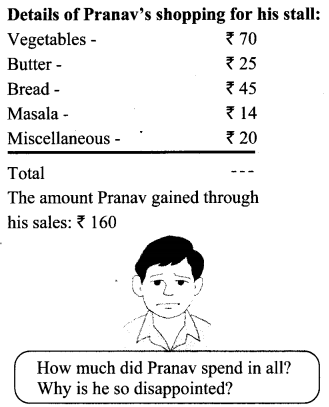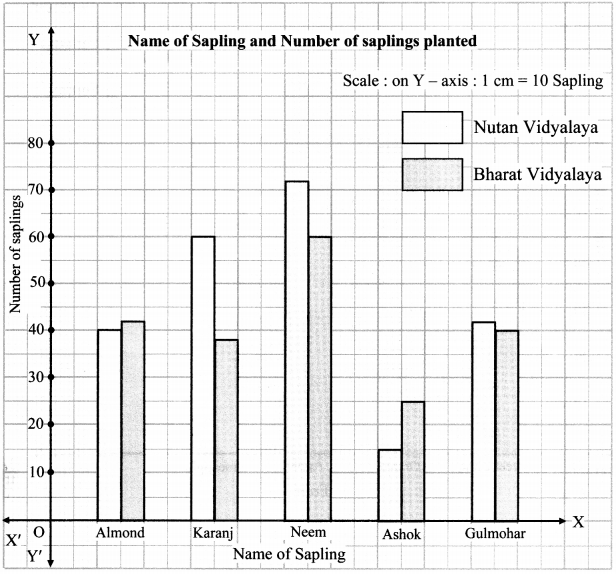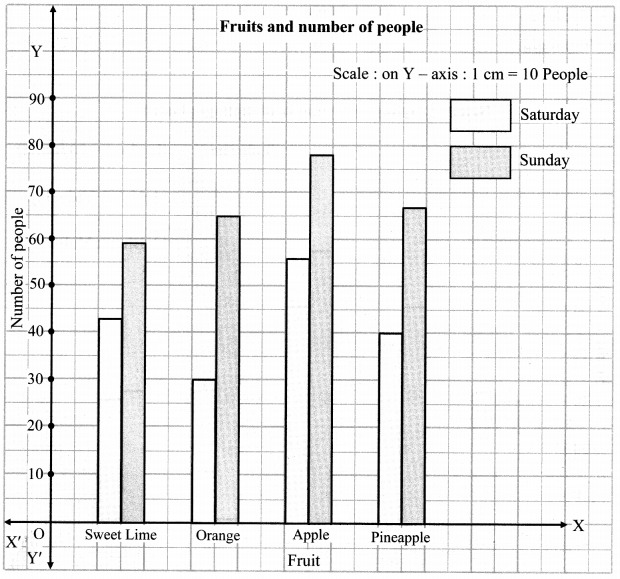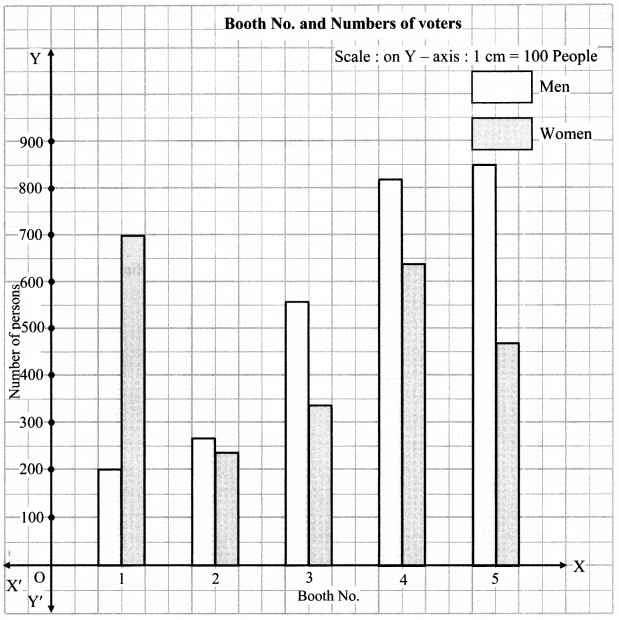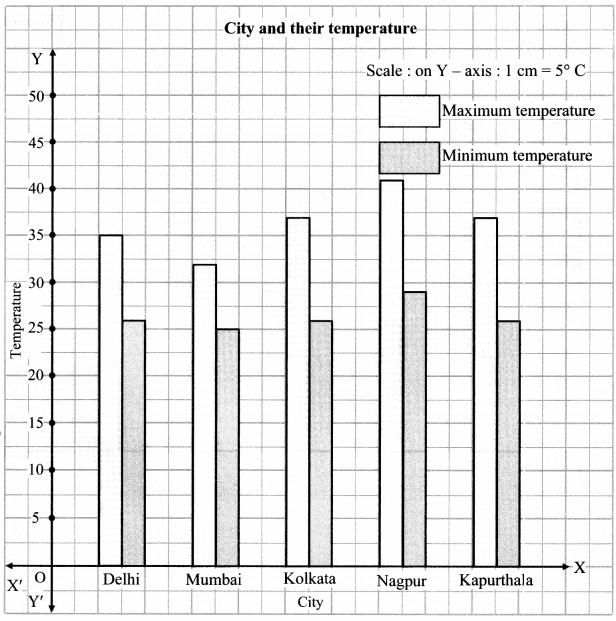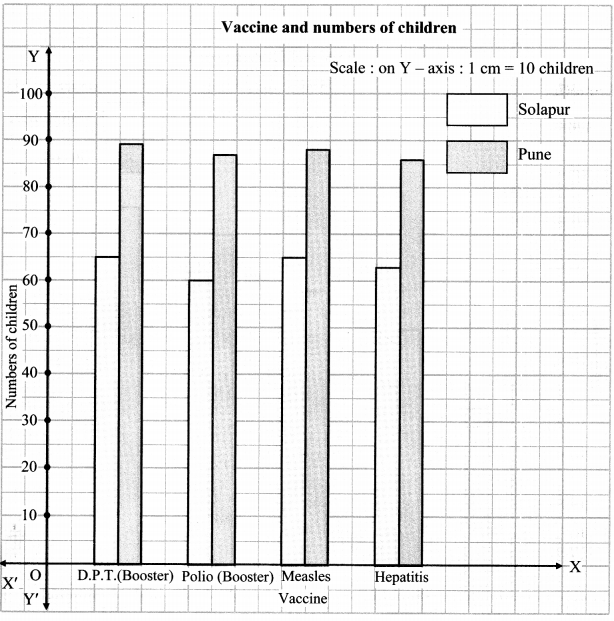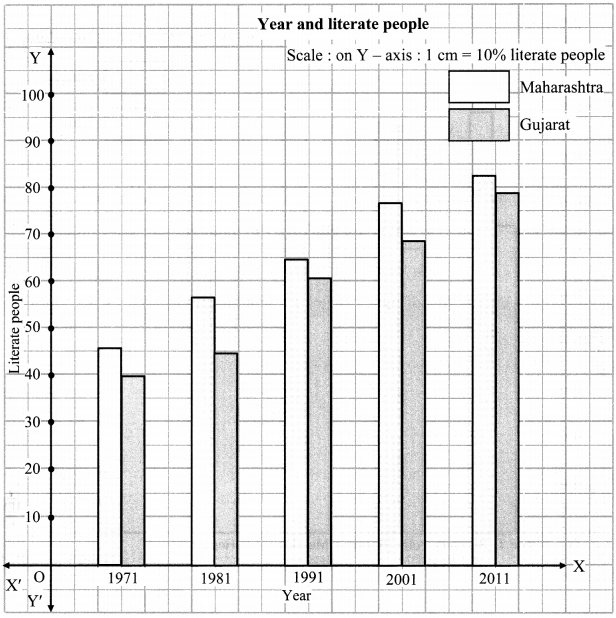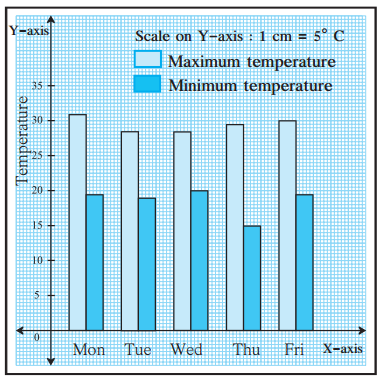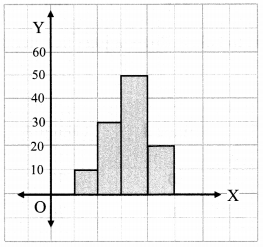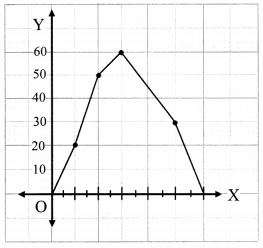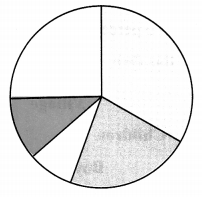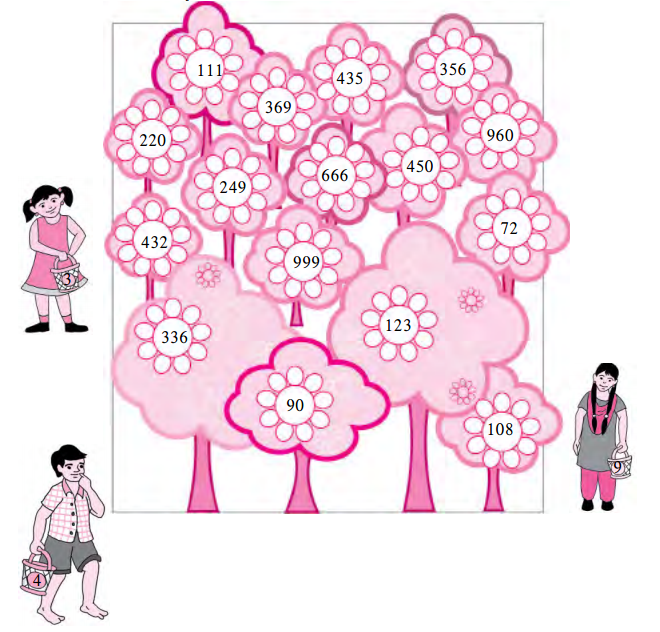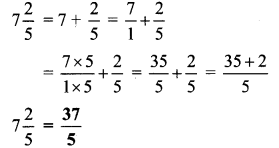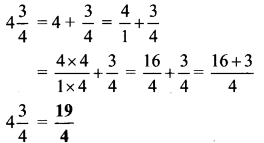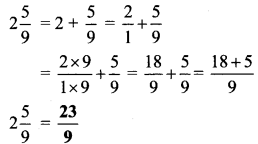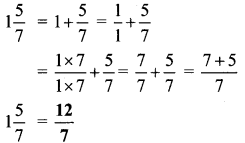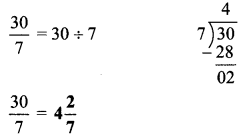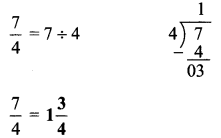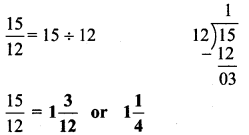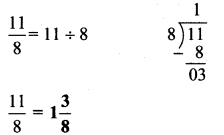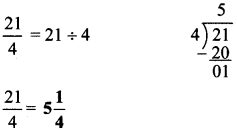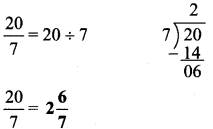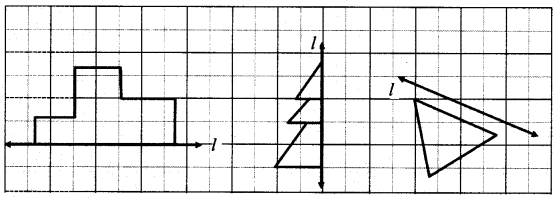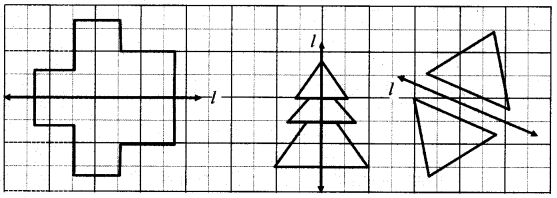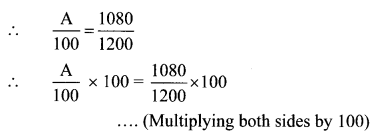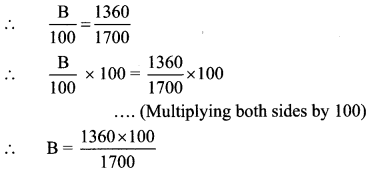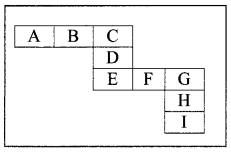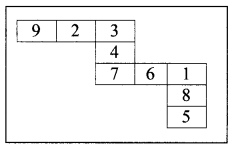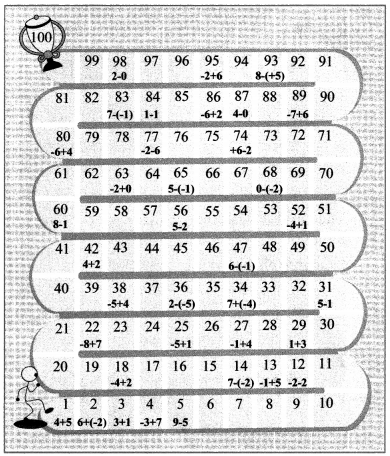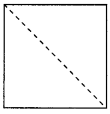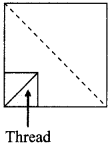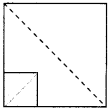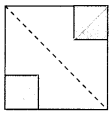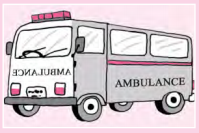Balbharti Maharashtra State Board Class 6 Maths Solutions covers the Std 6 Maths Chapter 4 Operations on Fractions Class 6 Practice Set 10 Answers Solutions.
Operations on Fractions Class 6 Maths Chapter 4 Practice Set 10 Solutions Maharashtra Board
Std 6 Maths Practice Set 10 Solutions Answers
Question 1.
Add:
i. \(6 \frac{1}{3}+2 \frac{1}{3}\)
ii. \(1 \frac{1}{4}+3 \frac{1}{2}\)
iii. \(5 \frac{1}{5}+2 \frac{1}{7}\)
iv. \(3 \frac{1}{5}+2 \frac{1}{3}\)
Solution:
i. \(6 \frac{1}{3}+2 \frac{1}{3}\)
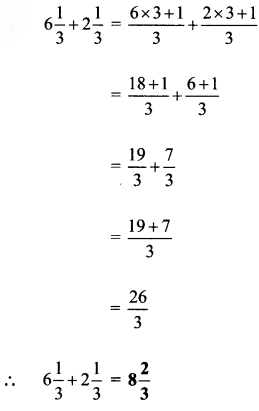
ii. \(1 \frac{1}{4}+3 \frac{1}{2}\)
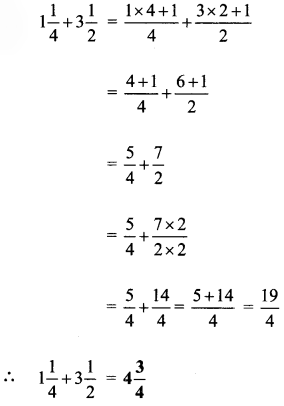
iii. \(5 \frac{1}{5}+2 \frac{1}{7}\)
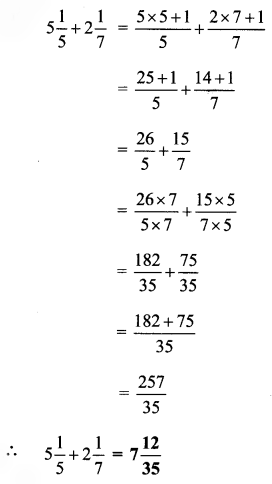
iv. \(3 \frac{1}{5}+2 \frac{1}{3}\)
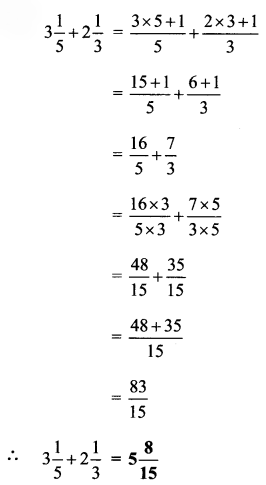
Question 2.
Subtract:
i. \(3 \frac{1}{3}-1 \frac{1}{4}\)
ii. \(5 \frac{1}{2}-3 \frac{1}{3}\)
iii. \(7 \frac{1}{8}-6 \frac{1}{10}\)
iv. \(7 \frac{1}{2}-3 \frac{1}{5}\)
Solution:
i. \(3 \frac{1}{3}-1 \frac{1}{4}\)
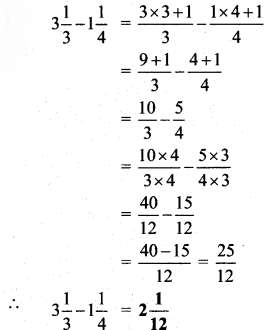
ii. \(5 \frac{1}{2}-3 \frac{1}{3}\)
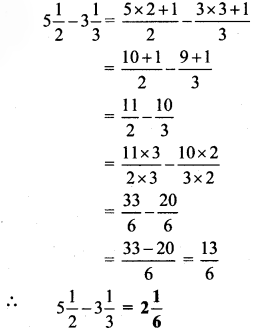
iii. \(7 \frac{1}{8}-6 \frac{1}{10}\)
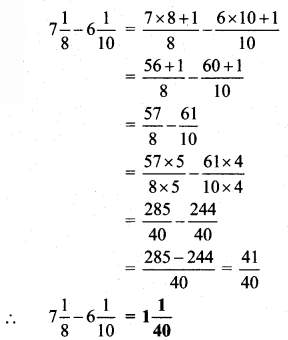
iv. \(7 \frac{1}{2}-3 \frac{1}{5}\)
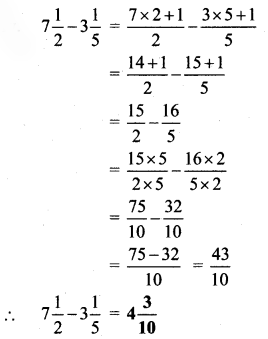
Question 3.
Solve:
i. Suyash bought \(2\frac { 1 }{ 2 }\) kg of sugar and Ashish bought \(3\frac { 1 }{ 2 }\) kg. How much sugar did they buy altogether? If sugar costs Rs 32 per kg, how much did they spend on the sugar they bought?
ii. Aradhana grows potatoes in \(\frac { 2 }{ 5 }\) part of her garden, greens in \(\frac { 1 }{ 3 }\) part and brinjals in the remaining part. On how much of her plot did she plant brinjals?
iii. Sandeep filled water in \(\frac { 4 }{ 7 }\) of an empty tank. After that, Ramakant filled \(\frac { 1 }{ 4 }\) part more of the same tank. Then Umesh used \(\frac { 3 }{ 14 }\) part of the tank to water the garden. If the tank has a maximum capacity of 560 litres, how many litres of water will be left in the tank?
Solution:
i. Sugar bought by Suyash = \(2\frac { 1 }{ 2 }\) kg
Sugar bought by Ashish = \(3\frac { 1 }{ 2 }\) kg
∴ Total sugar bought by both
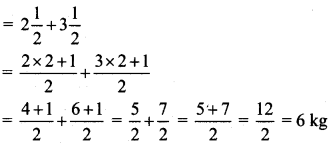
Cost of 1 kg of sugar = Rs 32
∴ Cost of 6 kg of sugar = 32 x 6
= Rs 192
∴ They bought 6 kg sugar altogether and the total money spent on sugar is Rs 192.
ii. Part of garden occupied by potatoes = \(\frac { 2 }{ 5 }\)
Part of garden occupied by greens = \(\frac { 1 }{ 3 }\)
Since brinjals are planted in the remaining part,
∴ (Part occupied by potatoes) + (part occupied by greens) + (part occupied by brinjals) = 1 entire garden.
∴ Part of garden occupied by brinjals = 1 – (part of garden occupied by potatoes + part of garden occupied by greens)
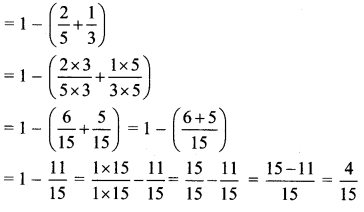
∴ Aradhana planted brinjals on \(\frac { 4 }{ 15 }\) part of her plot.
iii. Part of tank filled by Sandeep = \(\frac { 4 }{ 7 }\)
Part of tank filled by Ramakant = \(\frac { 1 }{ 4 }\)

Since maximum capacity of tank is 560 litres
∴ Quantity of water left in tank = \(\frac { 17 }{ 28 }\times560\) = 340 litres
∴ The quantity of water left in the tank is 340 litres.
Maharashtra Board Class 6 Maths Chapter 4 Operations on Fractions Practice Set 10 Intext Questions and Activities
Question 1.
How to do this subtraction: \(4 \frac{1}{4}-2 \frac{1}{2}\) ? Is it same as \(\left[4-2+\frac{1}{4}-\frac{1}{2}\right]\) ? (Textbook pg. no. 23)
Solution:
\(4 \frac{1}{4}-2 \frac{1}{2}\)
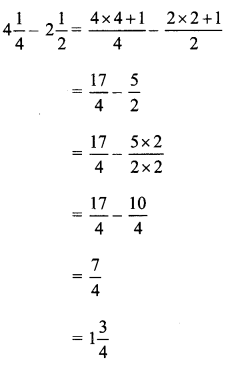
\(\left[4-2+\frac{1}{4}-\frac{1}{2}\right]\)
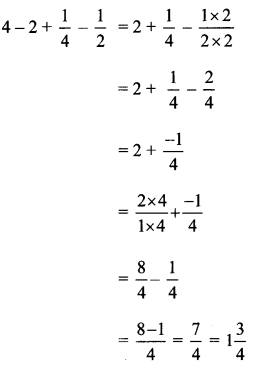
The subtraction \(4 \frac{1}{4}-2 \frac{1}{2}\) is the same as \(\left[4-2+\frac{1}{4}-\frac{1}{2}\right]\).
Std 6 Maths Digest
